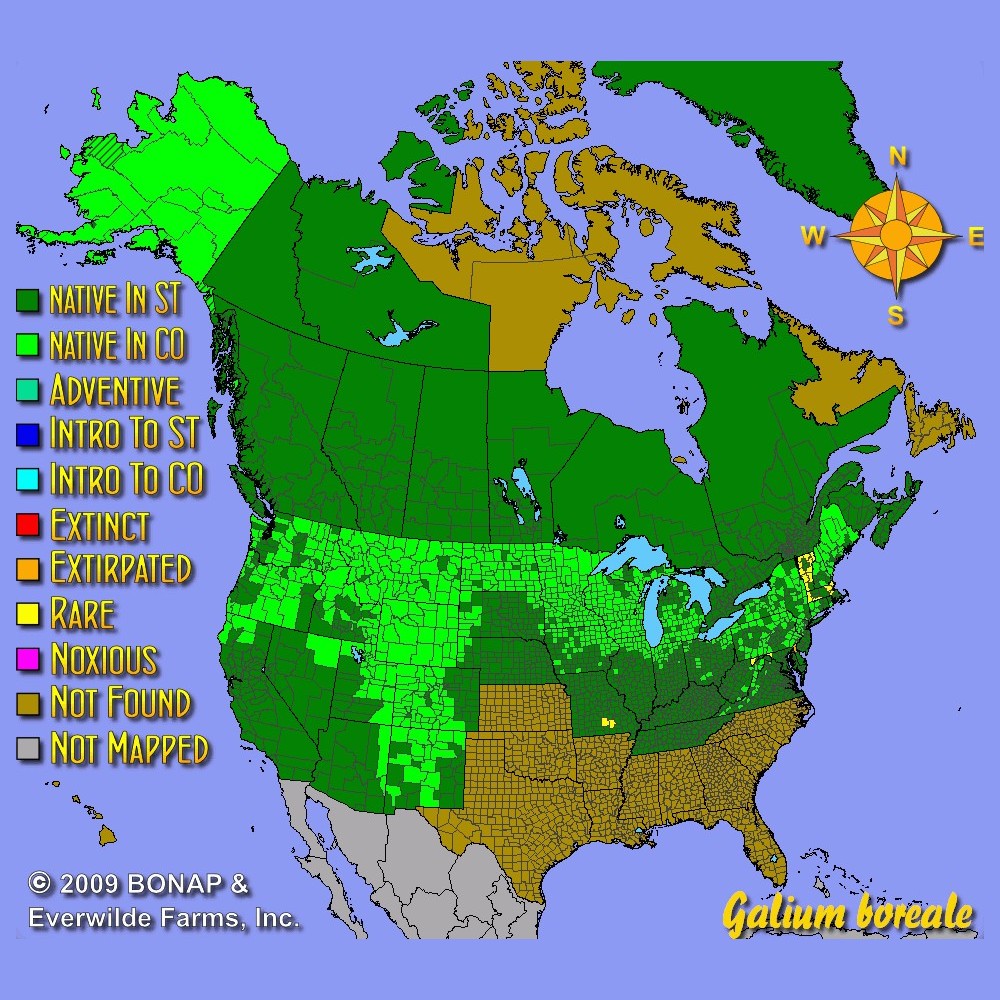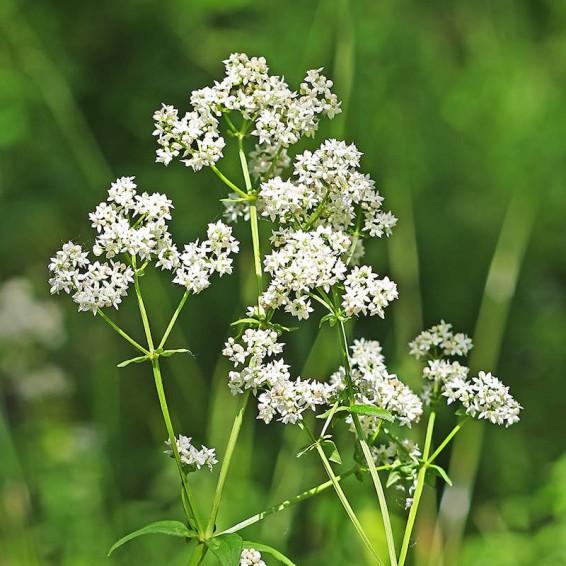Northern Bedstraw Seeds
Galium boreale
- HOW TO GROW
- FAST FACTS
HOW TO GROW
Sowing: Direct sow in late fall, planting the Galium Boreale seeds just below the surface and lightly compacting the soil. For spring planting or starting indoors, mix the Northern Bedstraw seed with moist sand and store it in the refrigerator for 30 days before direct sowing; keep the soil consistently moist and at a temperature of 70 degrees F until germination, which usually occurs within 10-15 days. Thin or transplant the seedlings.
Growing: Keep the soil consistently moist; this plant does not tolerate drought well. This Northern Bedstraw plant adapts well to rocky or sandy soil. The foliage can become scorched in excessive sunlight or heat, and the plant prefers growing in cool climates. Though slow to establish, it will spread by rhizomes and by self-seeding and can become rather weedy if left to itself.
Harvesting: For fresh flowers, cut long stems of flowers that have just opened and place them in water immediately; strip the leaves that will fall below the water. This plant also can be dried for a fragrant addition to potpourri, because of its naturally sweet scent.
Seed Saving: After flowering, this Northern Bedstraw wildflower will produce pairs of seeds that ripen to brown; cut off the stems or strip off the ripe seeds into a container. Store the cleaned Galium Boreale seed in a cool, dry place.
FAST FACTS
Latin Name: Galium boreale
Species Origin: US Native Wildflower
Type: Native Wildflowers
Life Cycle: Perennial
USDA Zones: 1, 2, 3, 4, 5, 6, 7, 8
US Regions: Mountain, Arid/Desert, Plains/Texas, Midwest, Northern, Northeast
Seeds per Ounce: 70,000
Stratification: No Stratification
Germination Ease: No Stratification
Sunlight: Full Sun, Part Sun
Height: 24 Inches
Color: White
Bloom Season: Blooms Early Summer
DESCRIPTION

HOW TO GROW
Sowing: Direct sow in late fall, planting the Galium Boreale seeds just below the surface and lightly compacting the soil. For spring planting or starting indoors, mix the Northern Bedstraw seed with moist sand and store it in the refrigerator for 30 days before direct sowing; keep the soil consistently moist and at a temperature of 70 degrees F until germination, which usually occurs within 10-15 days. Thin or transplant the seedlings.
Growing: Keep the soil consistently moist; this plant does not tolerate drought well. This Northern Bedstraw plant adapts well to rocky or sandy soil. The foliage can become scorched in excessive sunlight or heat, and the plant prefers growing in cool climates. Though slow to establish, it will spread by rhizomes and by self-seeding and can become rather weedy if left to itself.
Harvesting: For fresh flowers, cut long stems of flowers that have just opened and place them in water immediately; strip the leaves that will fall below the water. This plant also can be dried for a fragrant addition to potpourri, because of its naturally sweet scent.
Seed Saving: After flowering, this Northern Bedstraw wildflower will produce pairs of seeds that ripen to brown; cut off the stems or strip off the ripe seeds into a container. Store the cleaned Galium Boreale seed in a cool, dry place.
FAST FACTS
Latin Name: Galium boreale
Species Origin: US Native Wildflower
Type: Native Wildflowers
Life Cycle: Perennial
USDA Zones: 1, 2, 3, 4, 5, 6, 7, 8
US Regions: Mountain, Arid/Desert, Plains/Texas, Midwest, Northern, Northeast
Seeds per Ounce: 70,000
Stratification: No Stratification
Germination Ease: No Stratification
Sunlight: Full Sun, Part Sun
Height: 24 Inches
Color: White
Bloom Season: Blooms Early Summer




